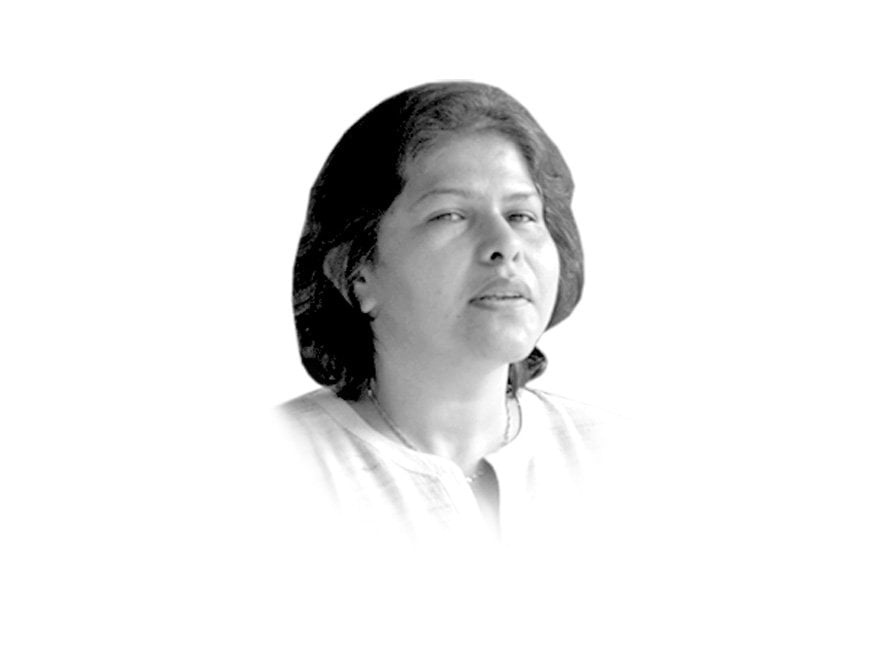
All of this sounds very good to the ears. In fact, too good even to distract people from looking at what is not happening or has become invisible. Consider!
The years of militancy and brainwashing had radicalised society. Later, militancy stood on the edifice of radicalism. But even before militancy became entrenched starting from the 1980s, our institutions were slowly radicalising. Their worldview and view of themselves were based on a singular interpretation of faith. That continues to be the case. For instance, very recently one of the prominent ‘friendly jihadist outfits’ criticised Javed Ghamdi and Maulana Wahiduddin as part of an “Ahmadi-Indian conspiracy”. But when referring to radicalism within state institutions, we know that there was infiltration in both law-enforcement agencies and the military. In early 1999, an American delegation was told that about 15-16 per cent of officers had extremist tendencies. Besides, there was the popular myth not discouraged by senior officers that the lower ranks and junior officers were sympathetic to extremist viewpoints. Interestingly, there is now almost total silence on that front. What is the possibility of these people being convinced that what was happening earlier was bad when part of the narrative explaining Peshawar and the later violence remains the same? If the establishment is to be believed that the Peshawar attack was India’s work, then why should the radical mind deviate from his/her earlier view that his radicalism is good?
What we are talking about here is the real challenge for the army chief and his DG-ISI. Both being well-trained officers and mindful of institutional history probably realise the ideological mess within the institution. These two officers are not the first ones to want to de-radicalise the military or to want peace talks with India. General Musharraf had tried to do both and what happened to him is now history. Despite all the reservations expressed regarding General Kayani, he was not an extremist. It is later that we heard that many generals did not even approve of General Musharraf’s ‘peace with India’ plan. Of course, there was no public disagreement but then something went wrong with both the plan and the person.
Radicalism is like a live wire running through the state and society. It produces violence often when required as was obvious in Pakistan’s case. Apart from Khyber-Pakhtunkhwa, which suffered repercussions of the war next door, the actual violence was fairly manageable. There was nothing big taking place or on the scale of Peshawar except for some attacks on hard targets, or on shrines or on religious minorities or on people belonging to certain sects. Not that the latter type of attacks are not serious but these were always ignored and considered more as irritants rather than serious threats. We have noticed that this continues to be the case. Some of the police officers who were reputed to accommodate the ASWJ leadership in their areas are still serving. Even if they were just being ‘pragmatic’ or if there is even half a per cent chance of these officers holding beliefs against other sects, there is an urgent need to address this problem. Similarly, if outfits like Al Huda continue to go inside cantonments, there is a need to look at the matter.
This is not a case for secularism but an appreciation of what unfettered preaching of religion by radical groups has done in the past. Even if we argue that the bulk of people condemned the Peshawar attack, we are still not sure how many think otherwise (we certainly know that Maulana Abdul Aziz was unwilling to do so). In programming, it is important to have a hand on the pulse.
I am also reminded of the de-radicalisation programme conducted by the Punjab police at about three test sites, two of which were in south Punjab. A number of people on the Fourth Schedule were trained as electricians and then given small amounts of soft loans to start their ventures. Interestingly, the fence-sitters amongst these people reformed but the hardcore never did. In fact, some of these people used the money to set up or expand madrassas and continued with their frame of mind.
The lesson right now is that there are no tools for ideological engagement vis-a-vis these elements. Indubitably, this is a long battle. But it is not going to do well if it is abbreviated with ‘ifs’ and ‘buts’. The police and security institutions have sufficient intelligence to track those behind sectarian attacks. Cruel as it may sound, but perhaps it is the state’s time to spill blood (this relates to religious terrorism) to send a clear message of zero tolerance to both militancy and radicalism. Talks are equally important but will have to come later. Radical elements should not be allowed to hide behind their silence. It is important to remember that such elements are often more strategic than states. To use Malaysia’s example, radical parties even use pop music, social media and celebrities to convert people. Any form of mainstreaming of militant ideology has its pitfalls.
Published in The Express Tribune, February 26th, 2015.
Like Opinion & Editorial on Facebook, follow @ETOpEd on Twitter to receive all updates on all our daily pieces.





























1714024018-0/ModiLara-(1)1714024018-0-270x192.webp)









COMMENTS (6)
Comments are moderated and generally will be posted if they are on-topic and not abusive.
For more information, please see our Comments FAQ